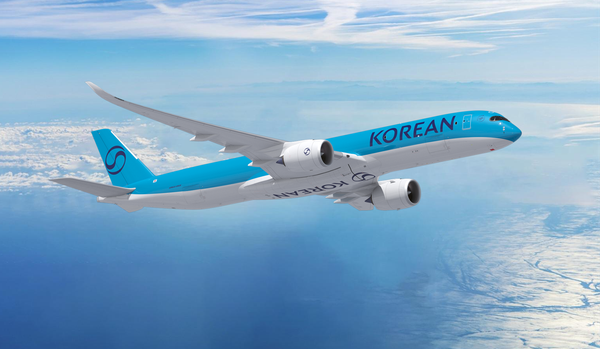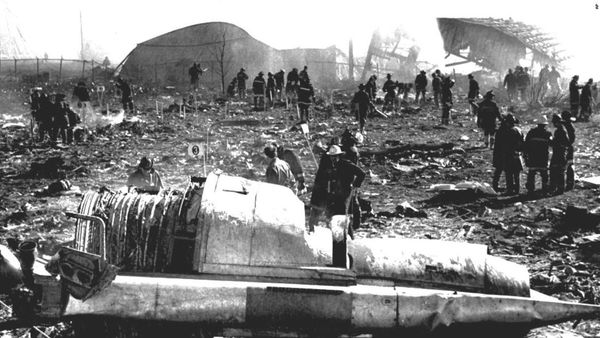Article written by Ejaaz Cadinouche for Jetstream Magazine.
Just as one would name their car or boat, airlines sometimes give names to their aircraft. While many carriers choose names inspired by well-known cities, landmarks, or historical figures, one airline stands out by adding a unique twist, infused with a touch of classic British flair.
British airline Virgin Atlantic's tradition of naming aircraft traces back to its founder, Richard Branson. In the aviation world, aircraft are typically identified by the final two letters or final three numbers of their registration — a unique code that acts as a flying license plate. Branson noticed that crew members often referred to planes using the phonetic alphabet, such as calling an aircraft with the registration G-VIRG "Romeo-Golf," with the "R" and "G" corresponding to "Romeo" and "Golf."

At the time, Branson was an avid sailor, and it was common practice to give boats and ships female names. Finding the standard method of referring to aircraft by registration codes dull and impersonal, he decided to carry over the maritime tradition to the skies. Just as ships had names with character and charm, he believed his aircraft should too. This resulted in the very first Virgin Atlantic aircraft, G-VIRG, being named, rather fittingly, “Maiden Voyager.”
The airline's names take inspiration from various avenues — particularly if there is a British link involved — often drawing from music, film, literature, food, and Cockney rhyming slang. Most importantly, they are all named after some of the most iconic women in British culture.
Cockney rhyming slang is a form of English slang that originated among the Cockneys in England, who lived in East London. It involves replacing a word with a phrase that rhymes, then omitting the original word to obscure the connection. For example, "Rosie Lee" is Cockney rhyming slang for "tea." Therefore, the airline gave the name "Rosie Lee" to its aircraft registered G-VTEA.

Generally, airlines are allowed to have a degree of freedom with their aircraft registrations, so long as they adhere to state and ICAO regulations. Private aircraft owners also have the ability to personalize their aircraft registration, similar to a custom license plate on a car. However, this will come with an added cost.
The Format of British Registrations
Just as with cars, every country has its own distinct format when assigning registration numbers to aircraft. For example, the United States uses "N-numbers," which consist of the letter N being followed by up to five alphanumeric characters. For example, N123AB or N12345 would both be valid registration codes for American aircraft.
British aircraft use a different format, beginning with a G- followed by four letters. It is important to note that Virgin Atlantic ensures there's always some link between the aircraft name and its registration, so the airline adopts a V after the G, resulting in all aircraft having registrations according to the format G-VXXX, where X can represent any letter.

This means the airline has three letters to play around with, and how they do this can be very entertaining. It is often an amusing mental exercise to attempt to work out the relationship between these aircraft's names and registrations.
Sometimes the links between the name and registration are fairly obvious, as with ‘Miss Moneypenny’, which is registered G-VSPY (Moneypenny is a fictional character from the James Bond films). Some links are more tenuous — such as "West End Girl" for G-VMAP — and others make seemingly no sense whatsoever, as with "Ruby Tuesday" for G-VXLG.

Here is a list of Virgin Atlantic names and registrations. Can you match the name to the registration?
| G-VDIA | Birthday Girl |
| G-VRAY | Rain Bow |
| G-VPRD | Lucy in the Sky |
| G-VNYC | Miss Sunshine |
| G-VEII | Uptown Girl |
| G-VNEW | Queen of the Skies |
[Answers: G-VDIA = Lucy in the Sky (Lucy in the Sky With Diamonds is a Beatles song); G-VRAY = Miss Sunshine; G-VPRD = Rain Bow (like the Pride flag); G-VNYC = Uptown Girl; G-VEII = Queen of the Skies (EII is a monarchical abbreviation for Queen Elizabeth the 2nd); G-VNEW = Birthday Girl]
British Airways Follows Suit
Having already explored one British airline's unique approach to aircraft naming, it's only fitting to turn our attention to the UK's flag carrier: British Airways. Whilst British Airways does not adopt the same larger-than-life style as Virgin Atlantic, the airline hasn’t completely shied away from adding personality to its fleet.

Let’s start with the narrowbodies. The BA-owned A319/320/321 aircraft sport the registrations according to the format G-EUXX, where X represents any letter. After the British signature G-, the EU stands for European Union, which is fitting considering that this fleet performs most of its flying in this region. Short-haul aircraft based at London-Gatwick airport sport registrations in the format G-GATX, very accordingly. For the airlines no longer seen in the skies, BMI (British Midland Airways) and British Mediterranean Airways, ‘G-MIDX’ and ‘G-MEDX,’ respectively. British Airways decided to keep the original registrations in honor of them.

At London City Airport, the precious Embraer fleet wears an extremely fitting registration of G-LCYX, with LCY being the airport code for London City Airport.
British Airways' long-haul aircraft make very impressive references. Its Boeing 777-200ER aircraft follow two different registration templates, depending on the type of jet engines they use. The Rolls-Royce-equipped aircraft follow the template G-YMMX, referring to the fact that they were first delivered in the year 2000 (MM being the Roman numerals for 2000). The General Electric-equipped aircraft follow the template G-VIIX, using the Roman numeral VII for the number seven, as in "Boeing triple seven." For British Airways' Boeing 777-300ER variant, the registrations follow the template G-STBX, referring to the "Stretched Boeing" design the aircraft has compared to its sister aircraft, the 777-200ER.
The airline's A350-1000XWBs are registered according to G-XWBX, where XWB is the same acronym for the "Xtra Wide Body" designation given by Airbus. The Airbus A380, the largest commercial aircraft in the world, follows G-XLEX. Although some aviation experts assume this stands for "Extra Large Elephant," this is not confirmed. In any case, it certainly emphasises the aircraft's extra-large nature.

British Airways's Boeing 787 Dreamliners start with G-ZBXX, with the first X depending on the variant of 787: the 787-8 being G-ZBJX, the 787-9 being G-ZBKX, and the 787-10 being G-ZBLX. The ZB seems to be a reference to the Dreamliner's "Zero Bleed" philosophy, which refers to how the aircraft uses electric generators, rather than bleed air, for its cabin pressurization, air conditioning, and anti-ice systems.
From talking to various employees at these airlines, it is clear that everybody has their own favorite name and registration for their own particular reasons. Again, despite the fact that this is not a new or special practice in the airline world, these British airlines showcase their fun-loving nature through names and registrations that reflect that. Which name and registration catch your eye?
This content is only available with an AeroXplorer+ subscription.
3,200 People Just Ordered This $300,000 Flying Car » Boom Supersonic Suggests Business Jets Could Be in Its Future » Lufthansa Flight Diverts after Passenger Stabs Teens with Fork »
Comments (0)
Add Your Comment
SHARE
TAGS
INFORMATIONAL Jetstream Jetstream Magazine Virgin Atlantic British AirwaysRECENTLY PUBLISHED
 Fuel, Faith, and Four Engines: How Emirates Makes the A380 Work
The world's largest passenger airplane — the Airbus A380 Superjumbo — was initially developed to revolutionize intercontinental travel by transporting high volumes of passengers over long distances. However, 20 years later, the A380 has not been the financial success that Airbus hoped it would be.
INFORMATIONAL
READ MORE »
Fuel, Faith, and Four Engines: How Emirates Makes the A380 Work
The world's largest passenger airplane — the Airbus A380 Superjumbo — was initially developed to revolutionize intercontinental travel by transporting high volumes of passengers over long distances. However, 20 years later, the A380 has not been the financial success that Airbus hoped it would be.
INFORMATIONAL
READ MORE »
 Korean Air Orders A350F Freighter
Korean Air has made a strategic decision to convert seven A350-1000 passenger aircraft orders into A350F freighter orders, reinforcing its position in the cargo aviation sector. This move reflects the airline's commitment to enhance operational efficiency and sustainability in response to growing cargo demands.
NEWS
READ MORE »
Korean Air Orders A350F Freighter
Korean Air has made a strategic decision to convert seven A350-1000 passenger aircraft orders into A350F freighter orders, reinforcing its position in the cargo aviation sector. This move reflects the airline's commitment to enhance operational efficiency and sustainability in response to growing cargo demands.
NEWS
READ MORE »
 Ghosts of 191: The Crash Site that Continues to Haunt Chicago to this Day
On May 25, 1979, American Airlines Flight 191 was scheduled to fly nonstop from Chicago’s O’Hare International Airport to Los Angeles. Operated by a McDonnell Douglas DC-10, the flight unfortunately met its untimely demise before it could even put some distance between itself and the Windy City. The events of Flight 191 continue to haunt Chicago to this day.
INFORMATIONAL
READ MORE »
Ghosts of 191: The Crash Site that Continues to Haunt Chicago to this Day
On May 25, 1979, American Airlines Flight 191 was scheduled to fly nonstop from Chicago’s O’Hare International Airport to Los Angeles. Operated by a McDonnell Douglas DC-10, the flight unfortunately met its untimely demise before it could even put some distance between itself and the Windy City. The events of Flight 191 continue to haunt Chicago to this day.
INFORMATIONAL
READ MORE »



